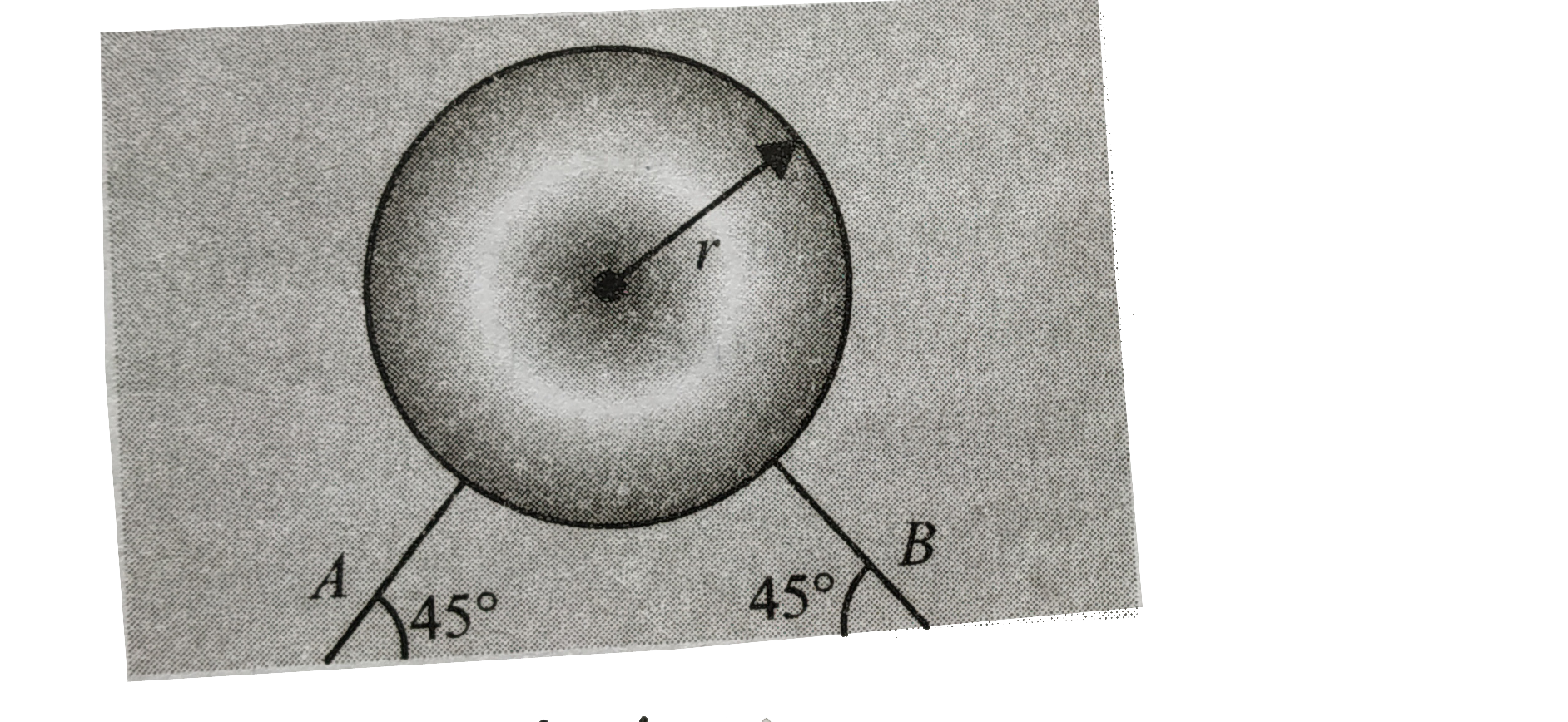A cylinder of height 30 cm and radius 7 cm is immersed completely in a fluid of density 1.3×103kg/m3. What is the buoyant force acting on it? [Take g = 10 m/s2]
Height of the cylinder, h = 30 cm
Radius of the cylinder, r = 7 cm
Volume of cylinder, Vc=πr2h=227×(7)2×30cm3
Vc4620cm3
Vc=4.62×10−3m3
Since the cylinder is completely immersed in the fluid,
∴ Buoyant force = volume of the cylinder × Fluid density × g
Vcρg
4.62×10−3×1.3×103×10
60N
Similar Questions
A solid of volume 5 m3 is immersed completely in a fluid of density 0.5 kg m−3. What is the buoyant force acting on it? [Take g = 10 m/s2]
View SolutionThe density of iron is 7.8×103kg m−3 What is its relative density?
View SolutionA solid ball of mass 5 kg occupies a volume of 240 cm3. How much will it weigh when immersed completely in a fluid of dnesity 2.7×103 kg m−3?
Hint : Apparent weight = Actual weight - Buoyant force
View Solution(a). A cube of side 5 cm is immersed in water and then in saturated salt solution. In which case will it experience a greater buoyant force. If each side of the cube is reduced to 4 cm and then immersed in water, what will be the effect on the buoyant force experienced by the cube as compared to the first case for water. Given reason for each case.
(b). A ball weghing 4 kg of density 4000 kg/m3 is completely immersed in water of density 103kg/m3 find the force of buoyancy on it. (given g=10m/s2)
View SolutionA vessel of base area 100cm×60cm and height 200cm is completely filled with a liquid of density 1.1×103kgm−3.
(a) Ignoring the atmospheric pressure, find :
(i) the thrust at the bottom of the vessel,
(ii) the pressure at the bottom of the vessel,
(iii) The pressure at a depth of 5 cm from the free surface,
(iv) the net force experienced by a metal foil of area 10cm2 placed at a depth of 5 cm from the free surface,
(b) The thrust at the bottom of the vessel if the atmospheric pressure equal to 1×105Nm−2 is taken into account.
Take g=9.8ms−2 .
View SolutionConvert
7.8g/cm3 to kg/m3
View SolutionA hollow sphere of mass M=50kg and radius r=(340π)1/3m is immersed in a tank of water (density ρw=103kg/m3). The sphere is tied to the bottom of a tank by two wires A and B as shown. Tension in wire A is (g=10m/s2)

View SolutionGlycerine flows steadily through a horizontal tube of length 1.5m and radius 1.0 cm. If the amount of glycerine collected per second at one end is4.0×10−3kgs−1 what is the pressure difference between the two ends of the tube? (Density of glycerine =1.3×103kgm−3 and coefficient of viscosity of glycerine =0.83Nsm−2)
View SolutionWater is flowing in a pipe of diameter 6 cm with an average velocity 7.5cm−1.s−1 and its density is 103kgm−3. What is the nature of flow ? Given coefficient of viscosity of water is 10−3kgm−1s−1.
View SolutionCalculate the moment of inertia of a cylinder of length 2 m, radius 5 cm and density 8×103kg/m3 about (i) the axis of the cylinder and (ii) and axis passing through the centre and perpendicular to its length.
View Solution
